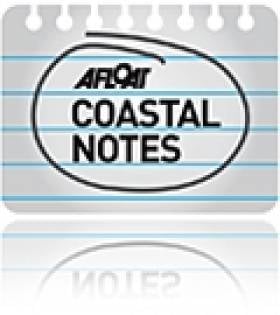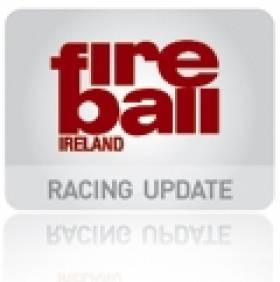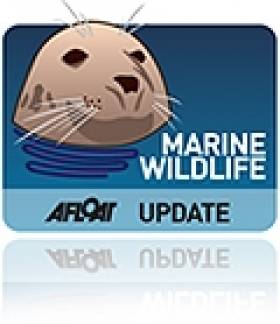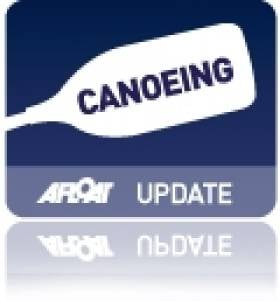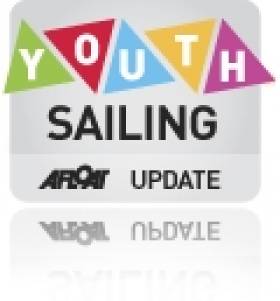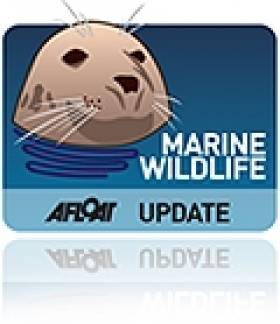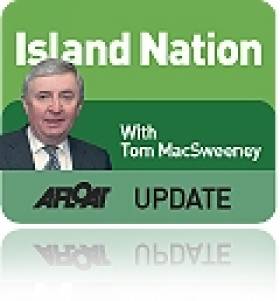Displaying items by tag: Ireland
Ireland's Bathing Spots Among Cleanest in Europe
Ireland has ranked fifth in a new Europe-wide report on bathing water quality - but some beaches in Northern Ireland are falling short of strict EU standards.
MEP Jim Higgins welcomed the results of the annual Bathing Water Report for 2010, saying: "Ireland's scenic attributes are a primary reason for attracting tourists and it is essential that our coastal and inland bathing sites are also enticing."
Ireland has moved up five places from its overall rank of 10th in 2009, with 90.1% of all bathing water sites meeting the EU's Blue Flag guidelines for water quality at beaches and swimming spots.
However, the Daily Telegraph reports that a number of beaches in Northern Ireland and other parts of the UK were judged to be 'poor'.
Beaches at Newcastle and Ballyholme in the North are among 16 across the UK that did not pass the EU's strict checks for Blue Flags.
The 2010 report ranks Cyprus as the cleanest bathing spot in Europe, with 100% of sites passing EU insspection. It was closely followed by Croatia with 97.3%, Malta at 95.4% and Greece at 94.2%.
New Doco on Record-Breaking Kayak Voyage Round Ireland
As Elaine 'Shooter' Alexander continues her challenge to be the first woman to circumnavigate Ireland solo by kayak, news comes of a documetary on another recent kayak voyage.
British adventurers Jeff Allen and Harry Whelan recently completed their own circumnavigation of Ireland, breaking the previous record by eight days.
The duo's exploits were captured by filmmaker Vaughan Roberts for 'Into the Wind', which documents their epic 25-day voyage. A trailer for the new film can be seen here:
Fireball Worlds Sligo, Two weeks and Counting!
This morning, Friday 27th May, the entry stands at 58 boats, spread across 9 nations and 3 continents. The spread of countries covers Ireland, United Kingdom, Switzerland, Australia, Shetland Islands, France, Czech Republic, Canada and Germany, with the continents being Europe, Australia and North America.
The home contingent boasts 28 boats, followed by GBR with 17 boats, France and Switzerland have three entries each, Canada and the Czech Republic 2, with Australia, the Shetlands and Germany each having one. However, there is a late attempt to get a second Australian entry to the event and in fact with entries being open right up to the eve of the regatta, there is always the prospect that more boats may still declare. I also know of one entry that isn't on the list yet as the crew was only secured last weekend and the boat is still being finished out.
So which names stand out in the entry list thus far?
Tom Gillard and Sam Brearey are the current European Champions having won that title in the Czech Republic in Pavlov last October. They gave a very convincing display in that regatta and have shown good form in the UK regattas they have sailed to date. Tom has also "dabbled" recently in the Scorpion scene in UK with success. Also on the podium in Pavlov was Jaroslav Verner of the Czech Republic who has entered for Sligo with a different crew. From further afield and the sole Aussie thus far, is Ben Schulz, sailing with Phillip Bowley, who finished 5th in the 2010 Worlds in Barbados. Ben is the current Secretary of Fireball Australia.
As the largest Fireball fleet internationally, the UK fleet always brings quality to these events and the entry list for Sligo reflects that continuing trend. Defending champions Chips Howarth and Vyv Townend are not entered, but the British contingent is like a "Who's who" of the class there.
Vince Horey, 11th in Barbados races with Andy Thompson, Matt Burge & Richard Wagstaff, 2nd in Barbados sail together again in Sligo, Simon Potts, 3rd placed crew in Barbados teams up with David Wade, 6th placed helm in Barbados and 6th placed crew in Barbados, Tim Saunders, current UKFA Chairman, teams up with Alan Krailing. For those who follow the Fireball scene in the UK and internationally, these are almost household names!
Messrs Jospe & Egli are perennial competitors at international regattas and they are joined by Messrs Tipton & King. Both combinations contested the Barbados event.
European Commodore Maja Suter is part of a 3-boat Swiss representation which also includes another Fireball stalwart in Ruedi Moser. The French contingent has a similar profile with 3 boats and Jean-Pierre Nouel (Monsieur Cantona) their most travelled competitor.
Of the Irish contingent, the names that will be vying for first home boat will include, on current form, Graeme Grant & Hugh Butler, Noel Butler & Stephen Oram, Barry McCartin & Conor Kinsella and Kenny Rumball & Seamus Moore. Much will depend on the weather, but a 28 boat contingent is great news for the host fleet and bodes well for an interesting session of racing.
Sligo here we come!
Shooter Hits Tramore Three Weeks Into Kayak Challenge
Elaine 'Shooter' Alexander has now reached Tramore on the south-east coast in her effort to circumavigate the island of Ireland by kayak.
Now three weeks into her solo voyage to raise funds for Share, which works for the inclusion of disabled people in water-based and other activities, Shooter is edging ever closer to the half-way point of her 1,000-mile route.
See below for a map of Shooter's current position.
Basking Sharks Pay Early Visit to Ireland's Waters
The recent warm weather has attracted scores of basking sharks to feed in Irish waters weeks ahead of schedule, Metro reports.
Video posted on YouTube by mackerel fishermen in Donegal Bay shows one of the sharks - the second largest species in the big fish family - just metres from their boat:
"We saw about 20 basking sharks that day," fisherman Brian Smith told Metro. "I have never seen so many at this time of year. You don't usually see them until later in May time."
Despite their fearsome size, basking sharks are among the friendlies of Ireland's marine wildlife.
They feed only on plankton and tiny fish - sifting them through their enormous gaping jaws - and are known for their calm temperament.
Shooter Gets Ready to Kayak Round Ireland
Monaghan's Elaine 'Shooter' Alexander will soon begin her challenge to be come the first Northern Irish woman to circumnavigate the island of Ireland by kayak, the OutdoorNI Adventure Blog reports.
On 3 May she will set off from the newly refurbished County Antrim Yacht Club at Belfast Lough on a 1,000-mile trek that's expected to take two months to complete.
Alexander will be paddling clockwise around Ireland, taking on tides, cliffs, headlands - and Ireland's unpredicable weather.
The Ulster woman has been training since last year for the challenge, which is intended to raise funds for the Fermanagh-based SHARE, a charity that brings together disabled and non-disabled people in arts and outdoor-based activities.
“Last year I paddled around Ulster which took 26 days and prepared me for some of what to expect for this expedition," says the competitive kayaker, who represented Northern Ireland twice at the Surf Kayak World Championships.
'Shooter' will also be posting regular updates of her trip on Facebook, Twitter and YouTube. Details on this as well as how to donate are available on her website www.canoearoundireland.com.
The OutdoorNI Adventure Blog has more on the story HERE.
RS Feva Sailing Dinghy Launches in Malta
Paul Childs, a qualified instructor from RS Sailing, visited Malta to run an initial coaching weekend, helping to set up the boats and introduce the young sailors to Feva sailing techniques. "As usual, the kids were really excited about the Fevas and they had a brilliant time on their first weekend" he reports. "Some of them are clearly already talented young sailors and I reckon we'll see some of them heading towards the top of the class pretty quickly. But the main thing is... they all had fun."
Adoption of the RS Feva class means Malta follows the pathway adopted by an ever increasing number of nations. The Feva can be used for training as well as racing, with the rotomoulded polyethylene construction system giving a durable and affordable boat. Young sailors are attracted by the performance, modern style and asymmetric spinnaker.
The 2011 RS Feva World championships, sponsored by Allen Performance Hardware and Magic Marine, take place in Holland in late July with entries expected to exceed last years 150 boat fleet from as far afield as Hong Kong.
You can find out more information about the growth of the RS Feva class in Malta by contacting Birzebbuga Sailing Club – www.birzebbugasailing.com and full details of the RS Feva can be found at www.RSsailing.com or the International Class Association at www.RSsailing.org .
British Coastguard Fears Loss of Choppers
The union representing coastguard staff in the UK has expressed its fears over the loss of air rescue services when a number of helicopters are transferred to Ireland next year.
Under CHC's €500m contract to provide search and rescue services for the Irish Coast Guard, four helicopters will be withdrawn from England and Scotland for redeployment in Ireland.
However, HeraldScotland reports that the Maritime and Coastguard Agency (MCA) has no plans to replace these helicopters, which separately service Scotland's Isle of Lewis and Shetland Islands as well as the Solent and Portland in England.
The recent collapse of the privatisation deal for UK search and rescue services has meant there is no new operator lined up to replace CHC.
Jeremy Gautrey of the PCS union said that the situation "has now potentially left the coastguard service stranded without the guarantee that it will have sufficient helicopters to carry out search-and-rescue operations when the current helicopters retire."
HeraldScotland has more on the story HERE.
Ireland's First Biodiversity Audit Launched
Ireland's first ever biodiversity audit has revealed that our mountains, woodlands and waterways are home to more than 31,000 different species of plants and animals. For all the latest news on Irish marine animals click here.
Ireland's waters boast more than 560 different species of marine fish, most of which are perch-like or ray finned fish, while 29 different fish species inhabit Irish inland waterways.
The state of knowledge report also found that popular species of plants, birds or mammals make up just one in ten of all species in Ireland.
Dr Liam Lysaght of the National Biodiversity Data Centre told the Irish Independent that the report "will for the first time allow us to accurately describe Ireland's biological resources and identify the knowledge gaps that exist".
http://www.independent.ie/national-news/irelands-wildlife-audit-revealed-2591440.htmlScientists joined with State bodies, NGOs and third-level institutions last August to conduct the survey of Ireland's plantlife and wildlife.
Minister for Arts, Heritage and Gaeltacht Affairs Jimmy Deenihan said that the protection of Ireland's biodiversity "is not a luxury".
The report is available online at biodiversity.biodiversityireland.ie
Ireland's first ever biodiversity audit has revealed that the country's mountains, woodlands and waterways are home to more than 31,000 different species of plants and animals.
The survey reveals that Ireland's waters boast more than 560 different species of marine fish, most of which are perch-like or ray finned fish, while 29 different fish species inhabit Irish inland waterways.
The state of knowledge report also found that popular species of plants, birds or mammals make up just one in ten of all species in Ireland.
Dr Liam Lysaght of the National Biodiversity Data Centre told the Irish Independent that the report "will for the first time allow us to accurately describe Ireland's biological resources and identify the knowledge gaps that exist".
Scientists joined with State bodies, NGOs and third-level institutions last August to conduct the survey of Ireland's plantlife and wildlife.
Minister for Arts, Heritage and Gaeltacht Affairs Jimmy Deenihan said that the protection of Ireland's biodiversity "is not a luxury".
The report is available online at biodiversity.biodiversityireland.ie
Ports Must Not be Sold
Over 90 per cent of the nation's exports and imports move by sea. Our ports are the essential avenue, the doors to Ireland. They are the property of the nation and must work for the people, whose future has been destroyed by the greed of private interests. To suggest that recovery can be achieved by sale of these vital assets is a nonsense and damaging to the interests of the nation.
What is needed is a clear, definitive national ports policy in which the government sets down what the ports are to do for the nation. Their role should be identified clearly, their boards and managements told what they are expected to achieve on behalf of the nation, with penalties for failure.
Fine Gael had committed in its election manifesto, to replacing the existing boards of all State Port companies and Harbour Commissioners within one year of entering government.
Fianna Fail and the Progressive Democrats in government had turned the port companies into semi-private entities, responsible for their own financial operations. While it was indicated that this would improve competitiveness and provide better and more cost-friendly services for users, who would be represented on the company boards, there are differing views about how effective this has been.
Competition is not necessarily always the harbinger of effective service or provision of choice. A small island nation with a limited number of primary ports could have a policy maximising effectiveness, delineating between primary and minor ports providing commercial services, supporting the fishing industry and leisure sectors. There must be containment of costs, efficiency of operation and the best services for exporters and importers. There should be investment where required and could even be provision for private investment. But the ownership should remain with the State on behalf of the people.
The ports are national resources, not to be sold off to private interests.
Those who drew up the recovery report which proposes the sale of the ports represented private interests and included are banking and speculative development interests. They echo, in regard to the ports, a similar proposal in the 'second coming' of Bord Snip Nua'. There are some aspects of their suggestions which merit further consideration, but it is regrettable that people at high levels of position in Ireland appear to not fully appreciate that the nation is a small island for whom the sea and its approaches are of vital importance.


























